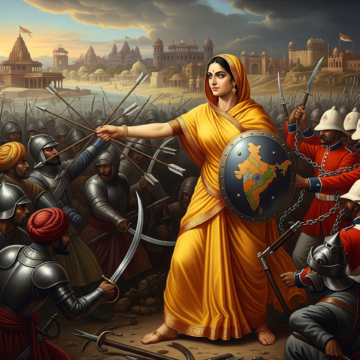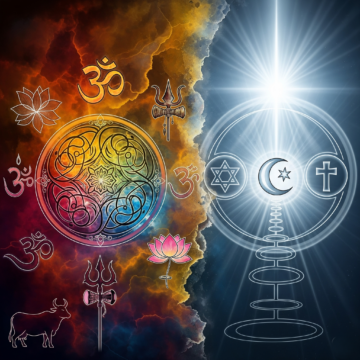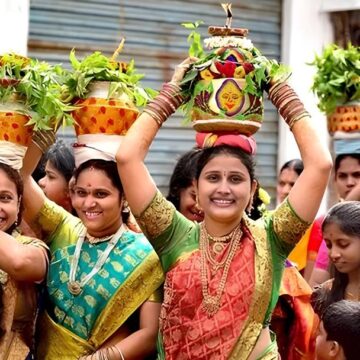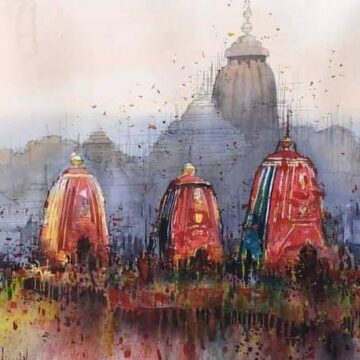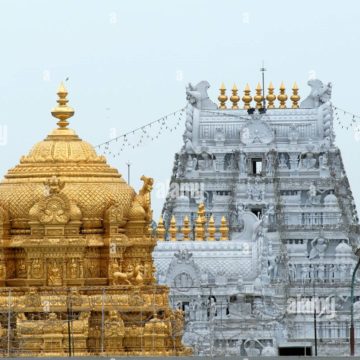A cobra once promised a Sadhu never to bite, only to be beaten by villagers who mistook its restraint for weakness. The Sadhu reminded it: “I asked you not to bite, but did I ask you not to hiss?” The parable mirrors Hindu society’s larger civilizational problem of mistaking non-violence for inaction in the face of aggression. True Ahimsa was never about surrender — it was resistance rooted in Dharma, with Shatrubodh (enemy-awareness) as its guiding strength.
Author: Ratnakar Sadasyula (Ratnakar Sadasyula)
Dharma and Development : A Civilizational Balance
When development is not rooted in culture, a nation is reduced to just a geographical landmass. Development and culture are not mutually exclusive in the Indian civilizational context. Sanatana Dharma doesn’t ask us to choose between development and devotion to faith — it asks us to integrate them. Its Purushartha framework enables human fulfillment in every aspect of life, with Dharma as the guiding principle. From the Ram Mandir to the Kumbh Mela, what critics dismiss as distractions are often engines of economy, culture, identity, and belonging.
Secularism in India – Rooted in Sanatana Dharma
India's secularism is grounded in the civilizational ethos of Sanatana Dharma and emphasizes mutual respect over strict separation of state and religion. Sanatana Dharma doesn’t just preach tolerance and inclusivity; it embodies it. Unlike Western secularism, which arose from religious conflict, India’s approach fosters coexistence. India's secularism is not just political, it is civilizational.
Tirupati – A Sacred Legacy of Devotion and Divine Grace
Nestled in the sacred hills of Tirumala, Tirupati is more than a pilgrimage — it is a living legacy of devotion and divine grace. From ancient Pallava endowments to the grandeur of the golden roof of the sanctum sanctorum donated by Krishna Deva Raya, its history is etched in every gopuram. Always reverbating with the chants of “Govinda”, for millions in South India, it is not just a temple, but an inseparable part of life’s journey.
Bonalu – The Living Goddess Traditions of Telangana
Bonalu is more than a festival—it’s the heartbeat of Telangana’s devotion to the Mother Goddess. Rooted in ancient village traditions and the worship of Grama Devatas, it transforms Hyderabad into a living tapestry of devotion, ritual and culture. From trance-induced prophecies to the fierce dance of Pothurajus, every moment is an embodiment of Shakti — both protective and powerful.
Harihara, Bukka, and the Birth of Vijayanagara
At a time when Muslim invasions had devastated much of North India and were sweeping into the South, two brothers—Harihara and Bukka—guided by the sage Vidyaranya, laid the foundation of the Vijayanagara Empire in 1336. More than a kingdom, it became a bastion of Hindu dharma, shielding the South for over two centuries. This is the story of its origins and enduring legacy.
The Kakatiyas – Architects of a Unified Telugu Identity and Cultural Legacy
The Kakatiya dynasty, ruling from Orugallu (present-day Warangal), significantly influenced Telugu history and culture. They unified the distinct cultures of the Deccan and Coastal plains, fostering a common Telugu identity. Renowned for their architectural achievements and contributions to Telugu society, the Kakatiyas are remembered as key architects of Telugu unity and cultural heritage.
The Immersive Experience of the Jagannatha Ratha Yatra
The Jagannatha Ratha Yatra of Puri, Odisha, while not the only such event in the country, is certainly the most prominent and important one. The siblings Jaganatha, Balabhadra and Subhadra (Krishna with His elder brother and younger sister) are brought out and travel to their aunt's house, known as the Gundicha temple, where they stay for a two week period.
Ratnakar Sadasyula throws light on the lesser known aspects of the Ratha Yatra, its traditions and procedures, in detail.
The Distinctive Architectural Style Of The Temples In The Telugu States
The Telugu states were more often a battleground for various kingdoms and dynasties, with constant battles often fought here for supremacy. This has resulted in a distinct style of temple architecture here.

